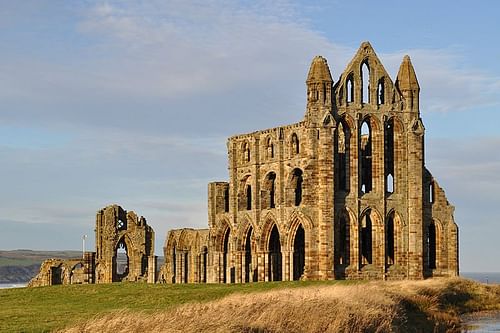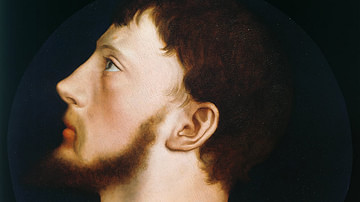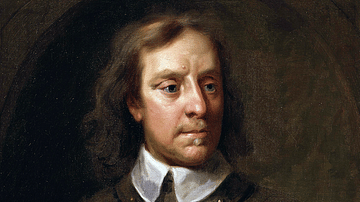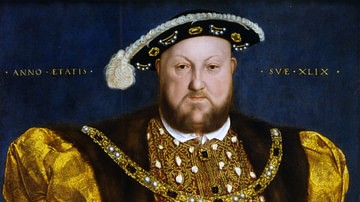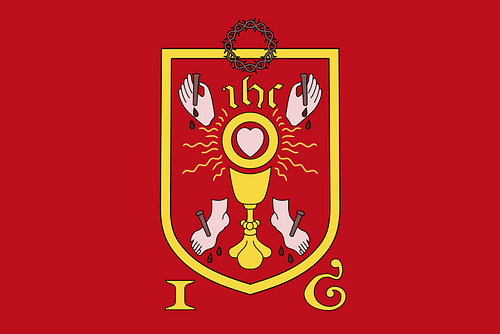
The Pilgrimage of Grace is the collective name for a series of rebellions in northern England, first in Lincolnshire and then in Yorkshire and elsewhere between October and December 1536 CE. Nobles, clergy, monks, and commoners united to oppose both the decision of Henry VIII of England (r. 1509-1547 CE) to split the Church in England from Rome and his policy of closing monasteries and confiscating their estates, the Dissolution of the Monasteries. Other grievances included the fear of new taxes and confiscation of Church property and a general lack of political representation in the north of England. The Pilgrimage of Grace, so-called because its participants considered themselves 'pilgrims', did not threaten London, but it was the largest rebellion of the Tudor period (1485-1603 CE). The 40,000 protestors were dispersed by the threat of armed force and false promises of pardons and reforms but, ultimately, many of the leaders, including the lawyer Robert Aske and Lord Darcy, were executed as traitors and Henry continued apace with the Reformation in England.
Henry VIII's 'Great Matter'
Henry VIII had a problem. He wanted to divorce his first wife Catherine of Aragon so that he could marry the younger and more beautiful Anne Boleyn (c. 1501-1536 CE) who might give him what he so desired: a male heir. The problem, which the king called his 'Great Matter', was that in the Catholic Church divorce was not permitted. After much diplomatic activity, the Pope refused to grant Henry an annulment of his marriage. The king, aided by his Chancellor Thomas Cromwell (l. c. 1485-1540 CE), then decided he would make himself head of his own Church in England and so be able to grant himself his own divorce. Consequently, Thomas Cranmer, the Archbishop of Canterbury formally annulled Henry's first marriage in May 1533 CE which meant that Henry could now marry a second time (which he had already done in secret a few months before). There was the additional consequence that Henry's daughter with Catherine, princess Mary (b. Feb. 1516 CE), was declared illegitimate and so disinherited. Henry was excommunicated by the Pope for his momentous actions, but this was only the beginning.
The Act of Supremacy of 28 November 1534 CE formally made the English king head of the Church of England which meant that Henry, and all subsequent English monarchs, only had one higher authority: God himself. The next scene in this momentous drama came in 1536 CE when Henry presented Parliament with a bill to abolish all monasteries in his kingdom, the Dissolution of the Monasteries. The bill was passed and the estates of the monasteries began to be redistributed to the Crown and Henry's supporters. The abbots of Glastonbury, Colchester, Reading, and Woburn were all hanged. And so began the English Reformation which would see Catholicism give way to Protestantism in England. Finally, Cromwell introduced The Injunctions in August 1536 CE, a set of recommendations on what exactly the clergy should be teaching their congregations such as explaining better the Ten Commandments and the Seven Deadly Sins.
Causes of the Rebellion
Henry VIII was likely very pleased with his clever side-stepping of papal authority, and many of his nobles were equally content to grab their bit of Church lands and riches. Additionally, many commoners were quite happy, too, to see the back of those rapacious and corrupt priests and monks who had blighted their villages. However, monasteries, in particular, had been an integral part of local communities for centuries, giving out alms to the poor, education to young children, providing employment and giving spiritual guidance. There were, then, quite a lot of other people who did not like the king's closure of some monasteries and his plans to close many more. This was especially so in the north of England where there was a high concentration of monasteries. First and foremost amongst the king's critics was Henry's respected former Chancellor Sir Thomas More (1478-1535 CE) who had disagreed with both the royal divorce and the Act of Supremacy. Sir Thomas was executed for his beliefs in July 1535 CE but there were many like-minded people still to deal with and these were the founders of the Pilgrimage of Grace, the most serious rebellion in England since the infamous Peasant's Revolt of 1381 CE.
The protest movement compiled a list of weighty demands of their king in the hope of reversing worrying changes to traditional parish life. The principal aims of the Pilgrimage of Grace were:
- to restore relations between the Papacy and England.
- to restore the monasteries and prevent further closures.
- to restore Princess Mary as the king's heir.
- to eliminate commoners from the King's circle of ministers (especially Cromwell).
- to remove two of the main architects of the Reformation: the Archbishop of Canterbury Cranmer and Hugh Latimer, Bishop of Worcester.
- to repeal the 1536 CE Statute of Uses, a tax on inherited land.
- to ensure better political representation for the northern counties.
The rebels, who called themselves 'pilgrims', did not want to replace their king, rather they considered him misguided by corrupt councillors, mostly either social upstarts or rich southern nobles only too keen to plunder the north of England for their own short-term gain. It did not help the volatile situation that the 1535 and 1536 CE harvests had been poor ones, rents were constantly increasing, and the policy of land enclosure - taking public hunting and fishing land for private use by the wealthy - was still ongoing.
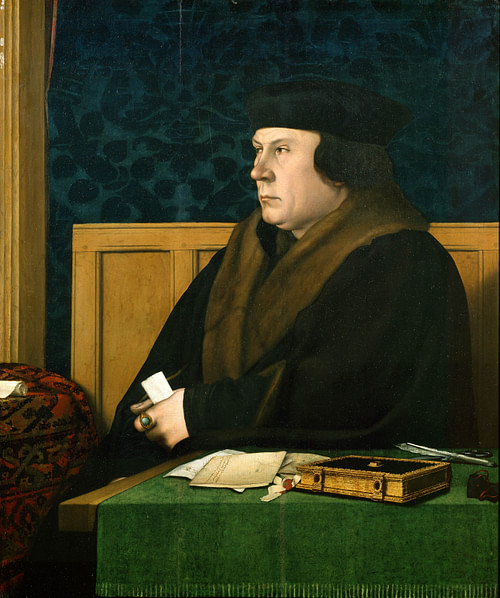
Lincoln & York Rise
The first trouble, the Lincolnshire Rising, began in Louth, Lincolnshire in October 1536 CE when an ordinary church procession developed into a mass protest march. The grassroots members joined the movement after persistent rumours had swept across the North of England that, after the closure of monasteries, parish churches would be next on the king's hit list. There was a fear that the king would, at the very least, plunder churches for their valuables such as gold crosses. Traders, meanwhile, feared that the local fairs held to celebrate saints' days might be repressed. There were even rumours that baptisms, marriages, and burials would all receive a new tax. Government commissioners had already been visiting the north to assess what was available for confiscation and if the Injunctions were being enforced.
The rebels first began by opening up some of the closed-down monasteries. This was welcomed by many commoners who derived employment and charity from them. Henry responded by sending an army to deal with the protestors in Lincoln who duly dispersed by 18 October. However, news caught on of the protest and it became even more serious in the cities of York and Pontefract where the castle was taken over. Protestors now gathered under their banner, the 'Five Wounds of Christ' and called themselves the 'Pilgrimage of Grace for the Commonweal'. Members swore the following oath of allegiance to the cause:
To take before you the cross of Christ and your heart's faith to the restitution of his church and the suppression of heretics' opinions. (Miller, 105-6)
The leader of this group was the Yorkshire lawyer Robert Aske (c. 1500-1537 CE). Both York and Pontefract were taken over, and Aske formed a council which created the list of demands mentioned above, collectively known as the Pontefract Articles. Aske had the support of many of the minor local gentry but even managed to persuade such figures as Lord Darcy (1467-1537 CE) to join the cause, and it was he who gave up Pontefract Castle to the rebels. Darcy later claimed that he had wanted to infiltrate the protestors to better serve the king's interests. Other noble families who sympathised with the revolt were the Nevilles, Dacres, and Percys. To see the end of the new Statue of Uses laws which taxed inherited land was another motivating factor for the local gentry. There was also material support from such figures as Eustace Chapuys (c. 1490-1556 CE), imperial ambassador to England of Charles V, Holy Roman Emperor (r. 1519-1556 CE). Now with an ever-greater number of protestors efficiently organised into local corps led by captains, with both nobles and commoners being involved, and with the spread of uprisings now reaching Lancashire and Cumbria, the whole movement had become a sort of crusade and an exceedingly dangerous one for Henry VIII.
A Peaceful Settlement
The king responded emphatically by sending a second army north, this time consisting of 8,000 and led by Thomas Howard, the Duke of Norfolk. The duke, a staunch Catholic himself and rival of Thomas Cromwell was a clever choice by Henry. To be absolutely sure of a favourable outcome, Henry also sent a fleet of ten ships to the north of England as backup. Crucially, the great northern earls of Northumberland, Westmorland, Cumberland, Derby and Shrewsbury all remained loyal to the king, even if some had initially hesitated.
Norfolk met the protestors as they marched to Doncaster. On 6 December, wary of the great number of the rebels he confronted - perhaps as many as 40,000, many of whom were armed - the Duke offered a general amnesty and the establishment of a new extended council of the North seated in York to better represent their grievances. Until this Parliament was in session, the closure of the monasteries and the confiscation of their wealth was to be put on hold. That the whole thing was merely a tactic to quash the rebellion is indicated in a letter from Norfolk to Henry in which the Duke states: I beseech you to take in good part whatsoever promise I shall make unto the rebels, for surely I shall observe no part thereof' (Miller, 105). Nevertheless, the protestors thought that they had won significant concessions and so stood down and dispersed on 8 December. This was a wise move as it later transpired that the singularly unimpressed king had only just been dissuaded by his own council to refrain from executing the leaders immediately.
The Reckoning
Henry, even if perhaps now more cautious, was still determined to press on with his religious reforms come what may and to prevent future disturbances he decided that the abbot and monks of Sawley were rounded up and hanged for he believed they had been the ones to stir up the initial trouble. The king did politely receive Ask at court but Henry, still very much a medieval monarch in outlook, was privately outraged that his subjects should ever question his policies whatever they happened to be.
Fatefully, a separate rebellion then broke out in January 1537 CE, also in Yorkshire. Henry, growing increasingly wary of the frequency of these troubles dealt brutally with this third outbreak of discontent and next decided to make an example of the Pilgrimage of Grace leaders, including Aske, Lord Darcy, the abbots of Whalley, Kirkstead, and Jervaux, the ex-abbot of Fountain's Abbey, and several prominent members of the Percy and Neville families. Consequently, 178 were arrested, given a mockery of a trial and then executed in June 1537 CE. The head of Darcy was put on a spike on London bridge while the body of Aske and several other rebels were hung in chains from the walls of York Castle as a stark warning to others. Meanwhile, the King's Privy Council did reduce illegal land enclosures and the Council of the North was reformulated which not only gave those in the northern counties a feeling of closer political representation but also allowed Henry to keep a closer watch on that part of his kingdom lest other rebellions occur to bother his reign.

